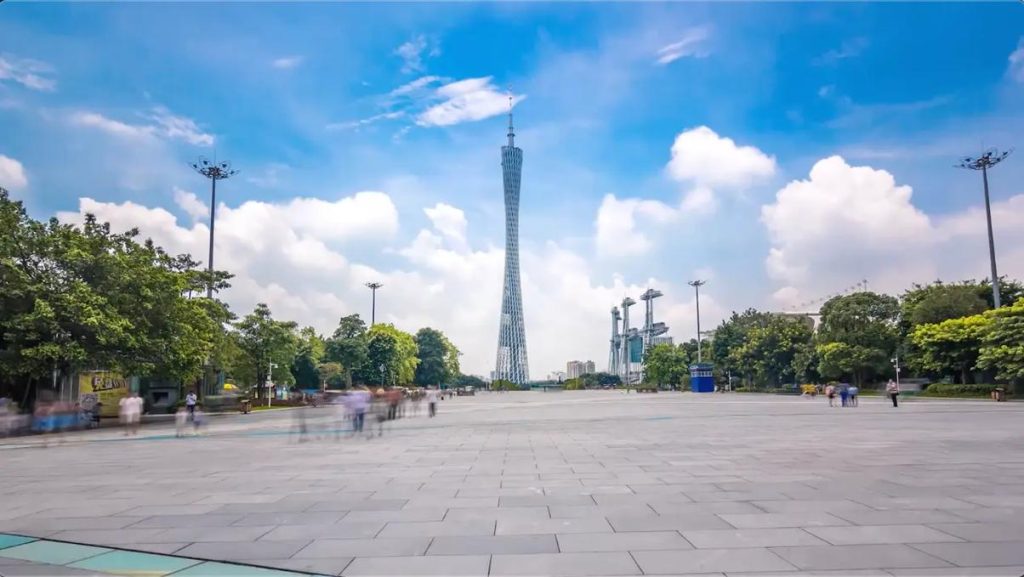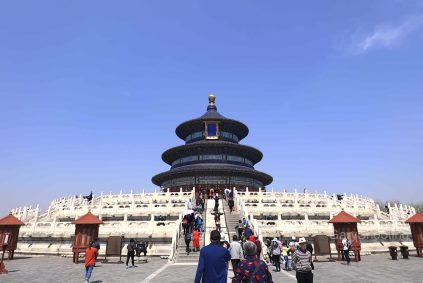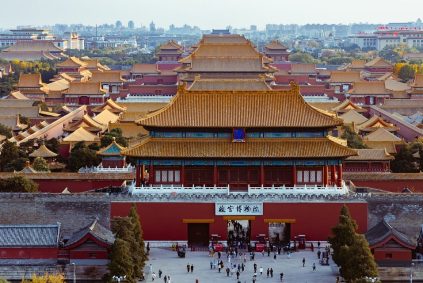Guangzhou’s Arcade Architecture: A Cultural Legacy Blending Tradition and Modernity
Historical Roots: From Colonial Influence to Local Adaptation
Guangzhou’s arcade buildings, known locally as “Qilou,” trace their origins to 19th-century Southeast Asia, where British colonists introduced covered walkways to shield pedestrians from tropical rain and sun. This architectural concept spread to Guangzhou through overseas Chinese merchants who returned from regions like Singapore and India, adapting the design to suit the city’s subtropical climate and bustling commercial needs. By the early 20th century, arcades became a defining feature of Guangzhou’s urban landscape, particularly along major thoroughfares like Beijing Road and Shangxiajiu Street.
The transformation accelerated in 1912, when the Guangdong provincial government mandated the construction of arcades along newly built roads to improve traffic flow and commercial activity. This policy led to the creation of nearly 40 kilometers of arcade-lined streets within a decade, turning Guangzhou into one of China’s most modern cities at the time. Architects blended Western neoclassical elements—such as Corinthian columns and decorative pediments—with traditional Lingnan features like carved wooden shutters and tiled roofs, creating a unique hybrid style.
Architectural Features: Functionality Meets Aesthetic Innovation
Guangzhou’s arcades are characterized by their three-part vertical structure: a decorative top floor, a functional middle section with shops or residences, and a ground-level covered walkway supported by columns. The walkways, typically 2.5 A 3 meters wide, provide continuous shelter for pedestrians, while the upper floors often feature balconies or bay windows that enhance ventilation and natural light.
A key innovation is the “ridged tile eave,” a waterproofing technique using overlapping clay tiles that channel rainwater away from the building. This design, combined with raised foundations, protects against Guangzhou’s heavy monsoon rains and frequent flooding. Many arcades also incorporate symbolic motifs, such as phoenixes or peonies, carved into wooden facades or wrought-iron balustrades, reflecting local beliefs in prosperity and longevity.
In districts like Liwan and Yuexiu, historic arcades retain original details like mosaic flooring and stained-glass windows, while newer renovations in areas like Beijing Road integrate modern materials like aluminum and glass without sacrificing traditional aesthetics. Per esempio, the 2025 renovation of a 1920s arcade on Taikang Road restored its original red-brick columns and arched windows while adding energy-efficient LED lighting and smart sensors to monitor structural health.
Cultural Significance: Living Heritage in a Modern Metropolis
Arcades are more than architectural relics; they embody Guangzhou’s identity as a trading hub where East meets West. During the Republican era, these spaces hosted tea houses, theaters, and traditional medicine shops, fostering a vibrant street culture. Today, they continue to serve as communal spaces, with renovated arcades housing art galleries, cafes, and boutiques that attract both locals and tourists.
The preservation of arcades aligns with Guangzhou’s broader efforts to protect its cultural heritage. Since 2023, the city has implemented strict guidelines for arcade renovations, requiring developers to retain original facades and historical elements. Initiatives like the “Lingnan Architectural Revival Project” have funded the restoration of over 200 arcade buildings, while digital tools like 3D scanning and augmented reality are used to document and share their stories with the public.
Arcades also play a role in sustainable urban development. By repurposing existing structures instead of demolishing them, Guangzhou reduces construction waste and preserves the city’s historical skyline. The pedestrian-friendly design encourages walking and cycling, aligning with global trends toward eco-friendly cities.
Contemporary Evolution: Bridging Past and Future
In recent years, Guangzhou’s arcades have embraced innovation while honoring tradition. IL 2025 opening of MINISO LAND, a retail complex in a renovated arcade on Beijing Road, exemplifies this trend. The building retains its original Lingnan-style roof and columns but features interactive digital displays and a rooftop garden with panoramic views of the city. Inside, spaces are designed to host cultural events, from traditional puppet shows to modern art exhibitions, creating a dynamic intersection of old and new.
Similarly, the Nansha District has launched a pilot project to convert underutilized arcades into creative workspaces for startups and designers, leveraging their historical charm to attract talent. These initiatives demonstrate how arcades can remain relevant in a rapidly changing urban landscape, serving as symbols of resilience and adaptability.
Guangzhou’s arcade buildings are a testament to the city’s ability to evolve without losing sight of its roots. By blending historical preservation with modern innovation, they continue to inspire awe and foster community, ensuring their legacy endures for generations to come.
















